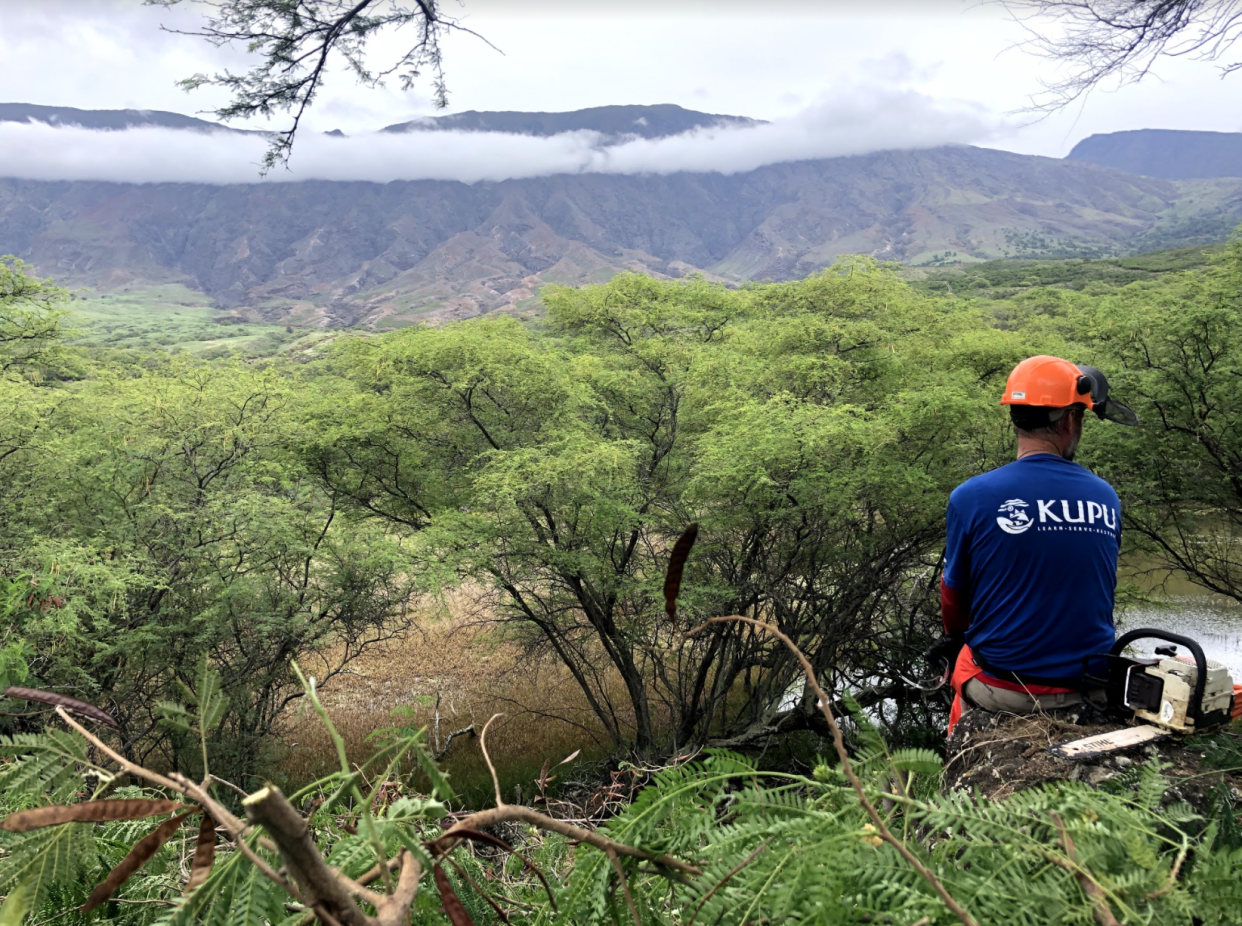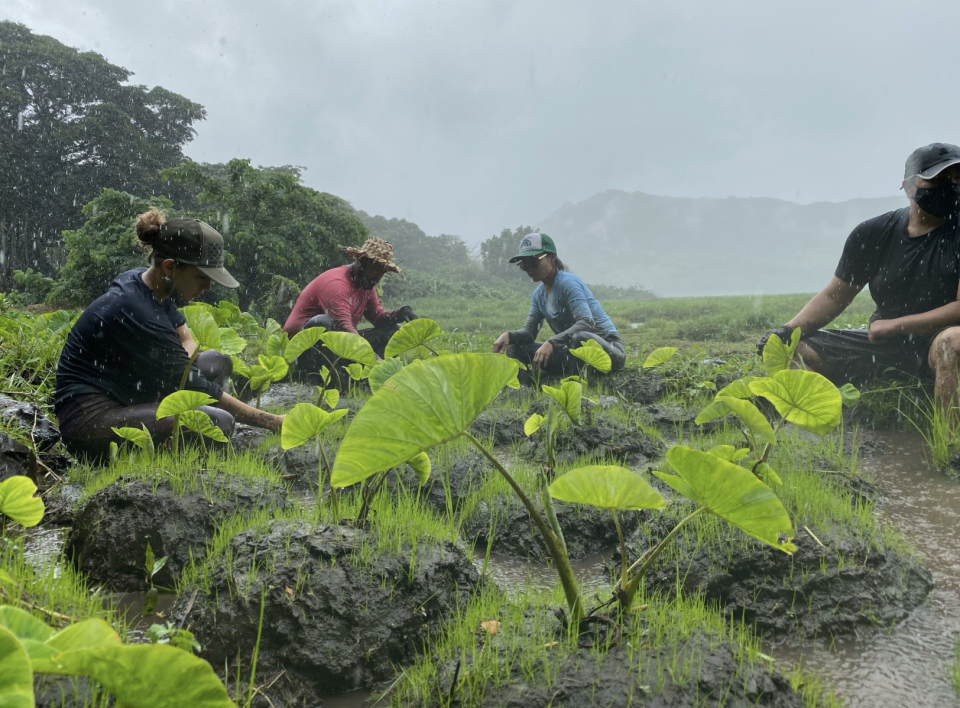Climate Corps America: Biden’s big plan to recruit a citizen army of conservationists

Buried in the details of the Biden administration’s climate action plan last week was a call for assembling a Civilian Climate Corps, “to heal our public lands and make us less vulnerable to wildfires and floods,” the president said.
It’s a 21st century iteration of an old idea. In the 1930s Franklin D Roosevelt created a Civilian Conservation Corps (CCC), part of his “New Deal” to help lift America out of the Great Depression. (However it mainly benefited young white men: Black men and Native American men were segregated on different projects and women were barred entirely.)
The Biden administration faces its own monumental challenges. Economic fallout from the pandemic caused claims for unemployment to reach 800,000 in December. US unemployment was 6.9 per cent in December and has had greater impact on low-skilled workers. The rate was 7.7 per cent for those with a high school diploma.
Meanwhile, scientists say that we have less than a decade to get the climate crisis under control or face even more catastrophic consequences.
It appears a neat fit: jobs for thousands of Americans who would go to work reducing carbon emissions by planting trees and restoring grasslands, and in adaptation schemes for impacts now unavoidable like extreme weather and rising sea levels.
Corps would be needed from coast to coast. Revamping the agricultural sector in Iowa will be as important as protecting the shoreline in the Florida Panhandle.
Federal agency AmeriCorps already operates service and volunteering programmes which tackle climate and environmental issues. The agency estimates that its existing network – 25,000 participants in about 130 programmes – could be scaled up to 500,000 young people and veterans over the next five years.
Unlike FDR’s CCC, a 21st-century corps would be equitable and diverse, “recruiting from, enrolling, and supporting women, young people of colour, urban and rural youth, and others from historically disenfranchised communities,” AmeriCorps says.
In this new series, The Independent takes a look at some of the projects already in place.
Hospitality to horticulture in Hawaii
Tourism is the primary driver of Hawaii’s economy so the decline in air travel and shuttering of the hospitality sector during the pandemic has crippled the island state. On Hawaii Island, unemployment shot up from 2.9 per cent before the pandemic to 23 per cent in April last year, one of the highest rates in the nation.
The state’s recovery is expected to lag as industry experts believe travel will only slowly return in the second half of 2021.
Like all Pacific communities, Hawaii, some 2,000 miles southwest of the US mainland, is on the front line of the climate crisis. The islands will face more severe storms in the coming decades, requiring buildings to be upgraded to withstand higher category hurricanes.

Shoreline erosion has also been a major problem in Hawaii. A recent investigation by ProPublica found that the local government ignored decades of seawall construction by wealthy homeowners which has decimated local beaches, the first line of defence against rising sea levels. It has also led to loss of endangered species and further harmed coral reefs.
In an innovative measure Hawaii allocated a portion of 2020 Cares Act stimulus funding to a Honolulu-based conservation group, with the idea of getting unemployed hospitality workers back to work in environmental and climate projects.
The non-profit Kupu, whose name means “grow or sprout” in the Hawaiian language, created an “Aina” (Land) Corps offering paid work to several hundred people.
CEO John Leong founded Kupu in 2007 with his wife Julianna and friend Matthew Bauer as a way of getting at-risk 16 to 24-year-olds into conservation work, helping them achieve high school equivalency diplomas along the way.
The Aina Corps had no upper age limit but most participants were under 40 due to the physical nature of the work. The projects included clearing the invasive red mangrove choking Pearl Harbor and destroying ancient fish ponds, and another preventing wastewater flowing to the ocean.
“We had folks that came from jobs in restaurants, hotels and bars,” Mr Leong told The Independent.
“Hawaii is so tourism-based that this was an opportunity to give people new skills in conservation. It also helped many of our conservation groups and agricultural companies which have been hit hard economically."
The programme employed 360 people at an average of $15 (£10.90) an hour with health care benefits. Participants could earn credits to be used towards community college. More than 1,300 people applied.
The Aina Corps ran for three months and more than 90 per cent of people who joined the programme stuck with it.
In that time the crews impacted 21,000 acres across Hawaii, completing 89,000 hours of work with about 100 organizations. Just under half (49 per cent) have either found a job or are pursuing a college degree.
Mr Leong recalled one young woman who had gone on to an internship at Reuse Hawaii, a group which disassemble structures by hand to recover usable building material.
“She had been working in a bar and was unemployed for most of the year. Now she's found something that she’s passionate about and enjoying the work. That's the hope – not only to get people working but to create purpose and direction," he said.
The Aina Corps cost around $3m to run but Mr Leong estimates that had $6.5m in social-economic impact.“It’s a two-to-one benefit,” Mr Leong said. “And that just increases over time if the programme has a longer track."
The Aina Corps ended in December after delays in additional Cares funding by Congress meant that it was too late to keep the programme going.
“Unfortunately the course had already been set for this programme,” Mr Leong said, adding that he was hopeful local government funding could fill the gap.
He said that it was painful to watch the programme disband.
“People were very gracious as they knew it was beyond our control but I think they’d have loved to stay on. Some are employed but there's still a lot of people out there that could use this work.
“One quote from our evaluations said, ‘I was so glad to be able to do this rather than sit at home collecting a check.’
"[The work] was meaningful to people.”
About 60 people from Aina Corps were incorporated into the non-profit’s other programmes. Kupu, which is part of the AmeriCorps networks, has put more than 4,000 young people through programmes.
“Over the last 12 years we've seen about a million native plants restored and about 75,000 acres of invasive species removed,” Mr Leong said.
There’s also efforts in maintaining trails and parks, and restoring cultural and environmental sites in Hawaii.
The programme is statewide in Hawaii and has spread to other Pacific communities of Samoa and the atolls of Midway, Johnston and Palmyra.
It’s not the only group at work in Hawaii. HuliauapaÊ»a focuses on the stewardship of wahi kupuna (ancestral places). The Hawaii Rise Foundation works on sustainability of natural resources and community-based agriculture to address food insecurity on Hawaii Island, and Maui Economic Opportunity is involved in park conservation and disaster relief prevention like trail and remote fence building, fire breaks, feral animal control, and marine mammal response.
Around 40 per cent of the young people in Kupu programmes come from homes where the annual income is less than $15,000. Kupu says 88 per cent end up with careers in conservation.
Mr Leong, who is an Obama Foundation fellow, described the Corps as a “bipartisan win”.
“It’s helping young people to advance themselves and getting environmental work done in a very cost-effective way. The money doesn't go into a black hole, it multiplies out,” he said.
Kupu also runs a culinary programme that pivoted to provide meals for those in need at the beginning of the pandemic.
“They have done about 100,000 meals in the community,” Mr Leong said. “A lot of these young people had received [financial] aid throughout their lives because of the situations they were in. Now they’re the ones providing aid. It's really flipped the script and been an empowering moment for them.”
Data Sananap, 26, has been in the culinary programme for about five years. The chef, the youngest of 15 children, told the Honolulu Advertiser: “It helped me reset my life. If it wasn’t for Kupu, I’d either be dead, on drugs or still selling drugs.”
Mr Leong sees the potential for Kupu to expand, and said that the work being done on Hawaii can offer a unique perspective when it comes to the climate crisis and adaptation techniques.
“We are a pretty sizable metropolitan community in the middle of the ocean and if we can steward our resources well as an island, what does that mean for the global island?” he said.
“What kind of lessons can be learned from us that can be translated and scaled in other parts of our world?
“It's a great opportunity not only to get people working in sustainable work but have a mission to battle climate change with young people at the forefront.”
Read More
John Kerry calls on the world to get serious on climate at Davos
Biden issues stack of orders to tackle climate crisis after Trump
Two-thirds of people think climate change is a ‘global emergency’

